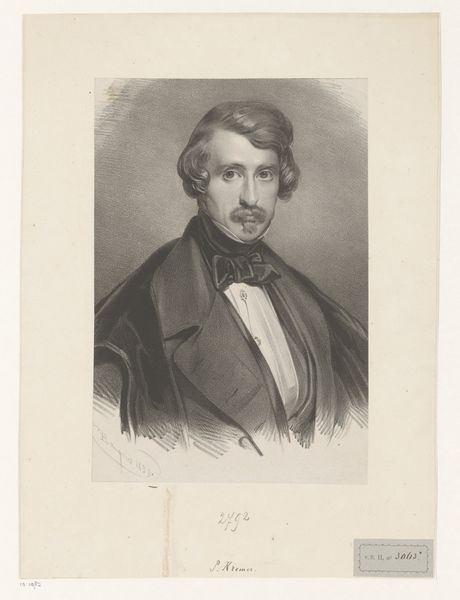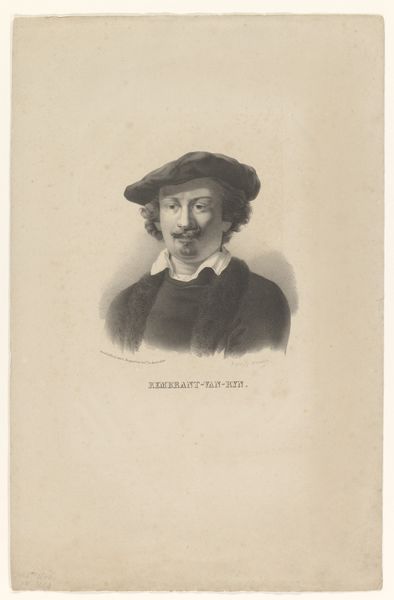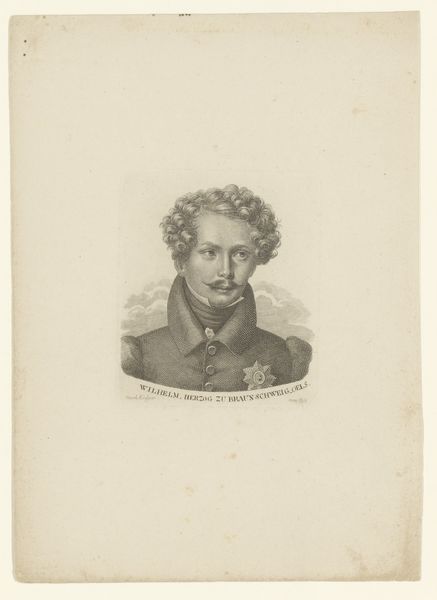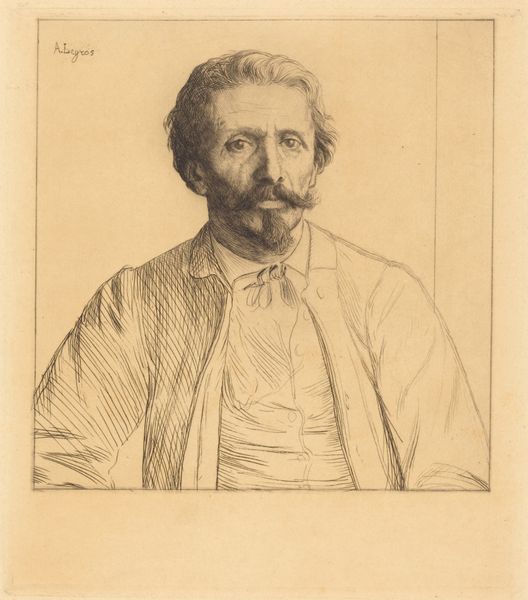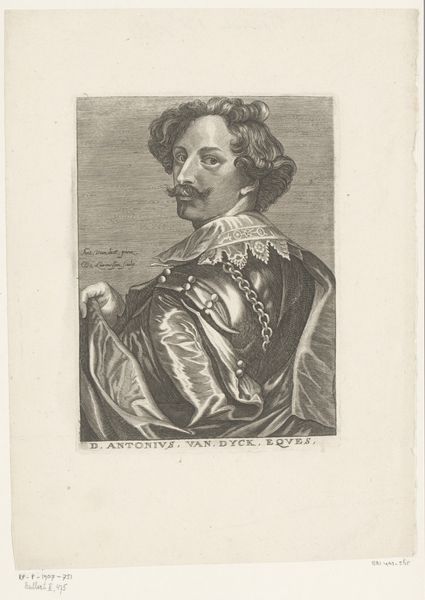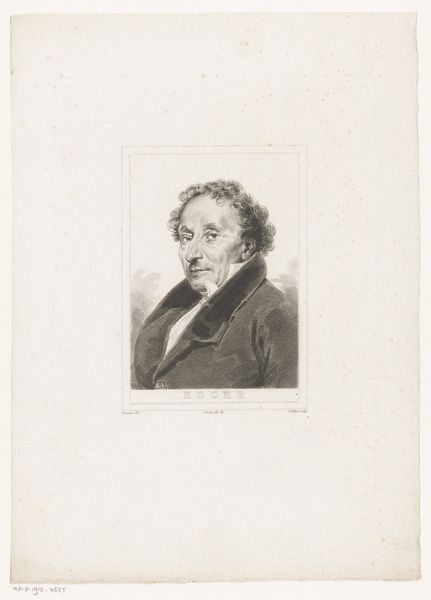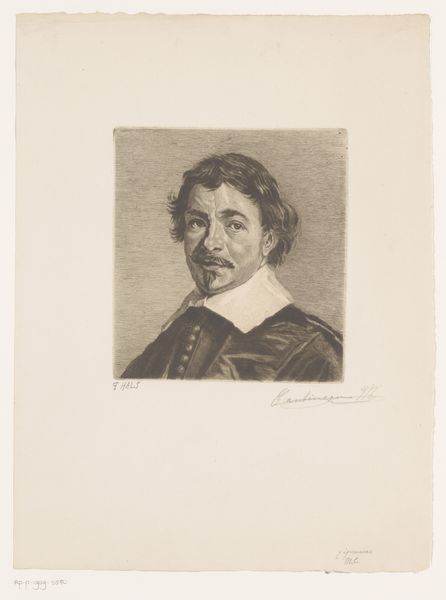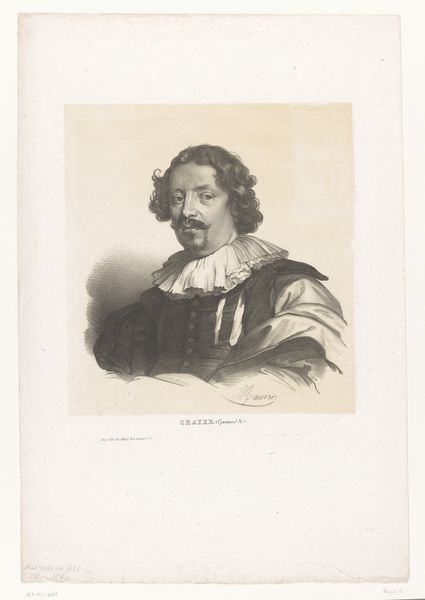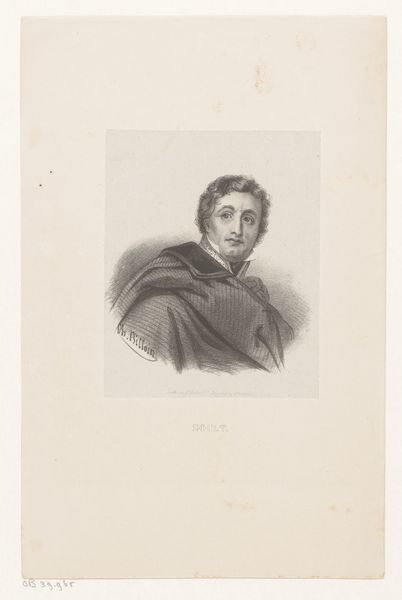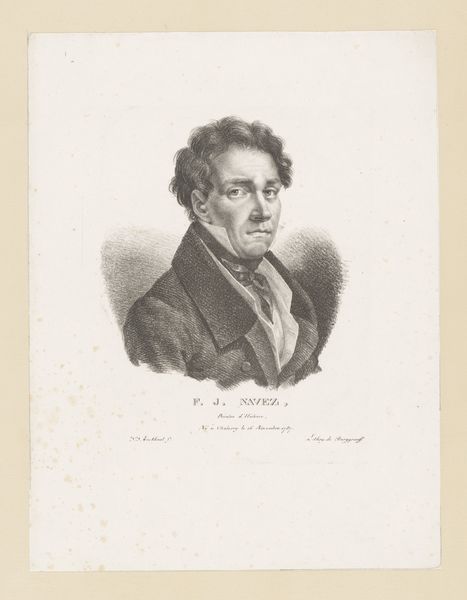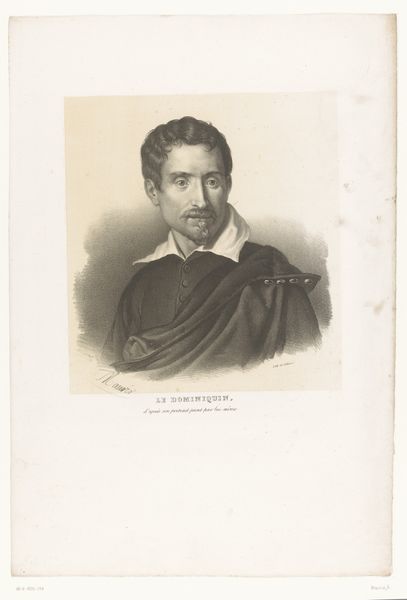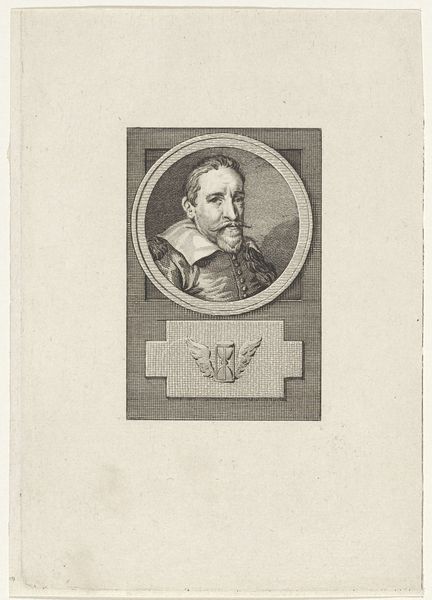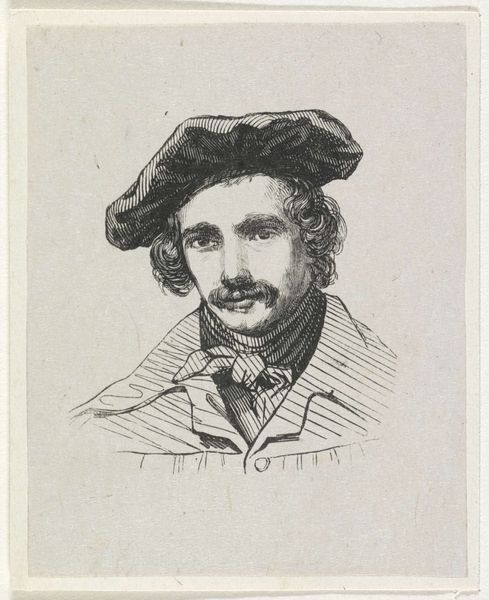
print, engraving
#
portrait
# print
#
pencil drawing
#
romanticism
#
engraving
Dimensions: height 503 mm, width 333 mm
Copyright: Rijks Museum: Open Domain
Editor: This is a print, an engraving, made between 1825 and 1852 by Antoine Maurin, titled "Portret van schilder Caravaggio"—Portrait of the painter Caravaggio. There's something really striking about the direct gaze; it feels very intentional. What do you see in this piece? Curator: Well, immediately, I'm drawn to the layered symbolism. This is a 19th-century portrayal of a 17th-century artist. The artist is shown in his prime! It's not just a representation; it's a carefully constructed image that calls upon the legacy, and perhaps romanticises it. Note the details - how the light catches his shoulder and collar. Are there elements that stand out to you? Editor: The star-like symbol on his chest caught my eye, and now that you mention light, it makes me wonder why the face is brighter than the robe. Curator: Exactly! The light emphasizing his face may point to a deliberate association of Caravaggio with enlightenment, maybe wisdom? It also echoes his artistic style. The star likely alludes to knighthood, and nobility. It certainly frames our perception. Think of the implications of depicting Caravaggio not just as a painter, but also within a symbolic framework. It shifts him into cultural memory, linking his artistry to specific values. It builds upon collective cultural memories. How do you respond to that interpretation? Editor: It makes sense. It’s interesting to see how even a portrait can be more than just a likeness. I initially only looked at the visual representation in front of me. Curator: It goes to show how potent visual symbols are, not just in the original work but also across time and re-interpretation. They act as cultural memory. Editor: That gives me a new lens for reading portraits and prints! Thanks for sharing your knowledge.
Comments
No comments
Be the first to comment and join the conversation on the ultimate creative platform.

